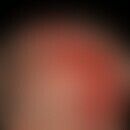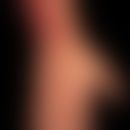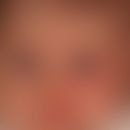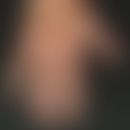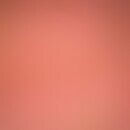Synonym(s)
DefinitionThis section has been translated automatically.
- Erosion: Superficial intraepidermal tissue defect
- Excoriation: tissue defect with injury to the papillary body
- Ulcer: Deep tissue defect with extension at least into the corium.
General definitionThis section has been translated automatically.
Wound: separation of tissue cohesion on external or internal body surfaces with or without tissue loss. A chronic wound is said to exist for longer than 2-3 weeks.
Infected chronic wounds: signs of infection such as redness, swelling, fever, pain, increased secretion, fetid odor are signs of wound infection. But: Every chronic wound is bacterially contaminated! Infection should always be treated with systemic antibiosis. The sensitivity of the germs can be determined by an antibiogram. Antiseptics should only be used on heavily bacterially contaminated wounds and in clinically manifest wound infection for no longer than 2-6 days. Prolonged use inhibits wound healing (cytotoxicity, granulation inhibition). In the long term, physiological saline solution is recommended for cleansing or other treatment of the wound (e.g. for removing dressing residues).
Notice. Local antibiotic applications to chronic wounds are obsolete!
Local antibiotic application poses the risk of developing polyvalent contact allergies, the development of resistance and thus a decisive disturbance of wound healing. Furthermore, the assessment of the healing process is made more difficult by an increasing secretion of the "sensitized wound". Neither are dyes and organic mercury compounds indicated for wound treatment today.
Notice. Dyes are locally incompatible and insufficiently effective. Mercury compounds lead to sensitization and have systemic side effects! Hydrogen peroxide is considered dispensable because it is cyotoxic, inhibits fibroblasts and can lead to necrosis.
Recommended antiseptics are:
Polihexanide (Lavasept): agent of choice for chronic or sensitive wounds due to good tissue compatibility, onset of action after 5 to 20 minutes.
Octenidine dihydrochloride (Octenisept): Onset of action after 30 seconds to >5 minutes, also shows good tissue compatibility.
Polyvidone iodine (Betaisodona, Braunovidon): rapid onset of action within 30 seconds, lasting as long as the presence of iodine is indicated by brown coloration. For chronic wounds, a dilution of 1:2 to 1:20 with Ringer's solution or physiological saline is recommended according to the manufacturer.
Debridement: removal of non-vital tissue from a wound. It should be the first step in the phase-oriented treatment of chronic wounds see below. Wound debridement).
Wound dressings:
- Polyacrylates (see below Gels, hydrophilic): They belong to the group of synthetic wound dressings. It is a cushion-shaped wound dressing containing a so-called superabsorber made of polyacrylate. The superabsorber is activated with Ringer's solution, which is continuously released to the wound and at the same time secretion is absorbed. This results in an absorbent rinsing effect with a very good cleansing effect. Examples include TenderWet 24, TenderWet Duo.
- Hydrogels: Hydrogels consist of carboxymethyl cellulose, pectin, propylene glycol and, depending on the product, have a water content of up to 60% and may be combined with calcium alginate. The high water content makes them well suited for dissolving fibrinous, necrotic, dry coatings and for rehydrating wounds. Secretion absorption is thus limited.
Note:
there is a risk of wound margin maceration with hydrogels. Examples include NU Hydrogel with alginate, Varihesive Hydrogel, Suprasorb G Amorphous Gel Intrasite Gel Comfeel Gel. - Alginates: Alginates are mainly used in the cleansing phase and for moderate to heavy wound secretion. They are commercially available as compresses and tamponades. Alginates consist of salts of alginic acid, which are extracted from brown algae. Due to their swelling properties, they are suitable for wound cleansing. On contact with the wound secretion, insoluble calcium alginate is converted into soluble sodium alginate by exchanging the calcium ions for the sodium ions present in the blood and wound secretion. This results in swelling and the formation of a gel that fills the wound and ensures a moist wound environment. This ion exchange also has a hemostyptic effect. Alginates can bind up to 20 times their own weight in secretion. Examples: Kaltostat, Sorbsan calcium alginate, Sorbalgon, Algosteril, Suprasorb A.
- Hydrofiber dressings: These can be used up to the epithelialization phase, are made of sodium carboxymethylcellulose and are commercially available as compresses and tamponades. They offer high absorbency (30 g secretion/g hydrofiber), wound secretion is absorbed only in vertical and not in horizontal direction. When used overlapping the wound edge, they are therefore very suitable as wound edge protection in macerated and eczematized wound environments. They are ideal for use in cases of polyvalent contact allergy. For dry wounds, additional moistening with physiological saline or Ringer's solution is recommended. Examples include Aquacel, Aquacel Ag, Textus multi.
- Silver-containing wound dressings: Ionic silver has recently regained importance in wound treatment due to its broad spectrum of antimicrobial activity. It acts primarily by interfering with DNA synthesis and binding to structural and functional proteins of the bacterial cell. Unlike other antiseptic substances, silver has very low toxicity. Various material combinations with silver ions or nanocrystalline silver are available. The use of silver-containing wound dressings is mainly indicated for infected and heavily bacterially contaminated wounds (Actisorb silver contains activated carbon fibers with silver impregnation; activated carbon absorbs bacteria, secretion, detritus and odor; silver has a bactericidal effect; Acticoat contains nanocrystalline silver which remains active for 3 days. It must be moistened with sterile distilled aqua to be activated. If saline solution is used, AgCl is formed and the silver ions are inactivated. If the overlay is too dry, silver precipitates on the wound. The blue side of the overlay must be placed on the wound. Acticoat can be left on the wound for up to 3 days, a secondary dressing is necessary.
- Foam and hydropolymer dressings: These can be used until the epithelialization phase. They consist of a polyurethane foam as a reservoir and a semi-permeable polyurethane surface with or without an adhesive edge. They are structurally stable, non-dissolving dressings that swell on contact with secretions. Here, too, the dressing is changed depending on the secretion behavior of the wound. In addition to absorbing exudate and cell detritus, a pressure and suction effect is also exerted on the wound bed, promoting granulation. Products without adhesive edges are suitable for tamponade of wound cavities, in unstable wound environments or for temporary defect coverage of surgical wounds. Examples include Tielle (sacrum, plus, borderless, lite), Allevyn (non adhesive, adhesive with adhesive border, heel heel dressing, sacrum, cavity), PermaFoam, Contreet foam Ag (adhesive, non adhesive), Suprasorb P, Mepilex (border).
- Hydrocolloids: They can be used up to the epithelialization phase. They are semi-occlusive wound dressings based on pectins, gelatins and cellulose derivatives. Hydrophilic colloidal particles are inserted into a hydrophobic polymeric scaffold, on top of which there is a semi-permeable (impermeable to liquids and germs, permeable to gases) polyurethane surface. The hydrophilic particles swell into a gel upon contact with secretions, resulting in loss of adhesion to the wound surface. This can be seen clinically as blister formation. In this moist wound environment, fibroblasts and macrophages are activated, growth factors are expressed, thus promoting angiogenesis and keratinocyte proliferation. Where there is no contact with wound secretions, the dressing adheres to the skin. The wound environment should therefore be stable, i.e. free of irritation and eczema. For special localizations such as the heel or sacral area, there is an additional fixation edge for better adhesion. Hydrocolloids can remain on the wound for several days up to a maximum of one week, depending on wound secretion; they should not be applied to infected wounds. A gel forms under the hydrocolloid dressing, which must be removed with Ringer's solution or physiological saline solution at dressing changes. Any maceration of the wound margin by the gel can be minimized by combining it with a hydrofiber dressing. Examples include Suprasorb H (standard, thin, border, sacrum), Varihesive E (border,extra-thin), Hydrocoll (concave, sacral, thin). Combination products include Contreet H (hydrocolloid dressing with silver ions released during swelling); CombiDerm (hydrocolloid with superabsorbent wound pad); Comfeel plus (hydrocolloid dressing with calcium alginate).
- Protease-regulating wound dressings: These consist of a freeze-dried matrix of bovine collagen and oxidized regenerated cellulose. They are used for stagnant wounds in the granulation phase without a fibrin layer until the epithelialization phase. Proteases (matrix metalloproteinases, elastases, plasmin) are present in excess in the chronic wound and inhibit or inactivate growth factors. Due to the large surface area of this matrix, proteases are bound and inactivated, and endogenous growth factors are bound and thus protected. These growth factors are released again in their active form upon resorption of the matrix. Free radicals are bound and cell proliferation is promoted. The matrix also has a hemostatic effect and ensures a moist wound environment, it can be used in combination with hydrocolloids and films. Example: Promogran.
- Biodegradable calf collagen: This is commercially available as a sponge structure and can be used for stagnant wounds in the granulation phase. Exudate, detritus and proteases are bound, thus promoting migration and proliferation of fibroblasts and consequently collagen synthesis and subsequently re-epithelialization. The sponge structure ensures a moist wound environment, and combination with hydrocolloids is possible. Examples include Suprasorb C.
- Vacuum sealing (VAC; Vacuum Assisted Closure System): The VAC therapy unit is used to continue effective wound cleansing after sufficient surgical debridement and especially in the granulation phase. By applying a continuous or intermittent negative pressure with the aid of a sponge, the wound surface is reduced by wound retraction, granulation tissue formation and blood flow to the wound bed are promoted, wound secretions are removed and the bacterial count is reduced. The black polyurethane sponge is coarse-pored and dry and is used for highly exuding and infectious wounds. The white polyvinyl alcohol sponge is fine-pored and hydrated, prevents tissue ingrowth and is particularly suitable for protecting tendons, nerves and vessels. The Minivac system is also suitable for outpatient use. It is used for 1-4 weeks; for the epithelialization phase, it is necessary to switch to another dressing system or surgical coverage may be considered.
- Tissue engineering products (currently still experimental approaches): These actively intervene in wound healing and are produced from autogenous, allogenous or xenogenous cells. The prerequisite for their use is a cleansed, infection-free wound. They are reserved for special indications only, as they are currently still very expensive. Examples of tissue engineering products currently available in Europe with approval for venous leg ulcers are Epicel (keratinocyte autograft), Epidex (autologous keratinocytes from hair root cells), Laserskin Autograft (hyaluronic acid sheets seeded with autologous keratinocytes) and Bioseed-S (autologous keratinocytes suspended in fibrin glue).
- Growth factors: The clinical results from available clinical studies are currently not very satisfactory. Their clinical application of growth factors is therefore reserved for special indications only. The prerequisite for their application is a cleansed and infection-free wound. The only currently approved preparation is Regranex-0.01% gel, which contains becaplermin, a recombinant human platelet-derived growth factor. It is approved for neuropathic and diabetic ulcers up to a maximum of 5 cm2. Example: Regranex-0.01% gel.
- Shark cartilage based artificial skin: Two-layer matrix system composed of bovine collagen and glycosaminoglycans. Glycosaminoglycans were obtained from shark cartilage, hence the name "shark skin" . In the meantime, fish cartilages of other fish species from non-usable fish catches are also used. Preparation: INTEGRA®
- Chitosan-containing wound dressings, due to their anti-inflammatory, antimicrobial properties for chronic, bacterial or mycotic overlying wounds; e.g. Chitoderm Plus
You might also be interested in
ImplementationThis section has been translated automatically.
See Table 1 for guidelines on wound treatment, see Table 2 for promotion of wound healing; see also pressure ulcers.
I. Erosion: Single use disinfectant solution such as polyvidone iodine solution(e.g. Betaisodona solution).
II. excoriation: Same as erosion, cleaning and sterile covering if necessary. In case of signs of inflammation, especially with disseminated signs of inflammation, smear and antibiosis according to antibiogram.
III Ulcer: In chronic wounds, wound cleansing, debridement and exudation control are the three critical factors. The older concept of therapy according to phase or stage is now increasingly abandoned because the cleansing phase, granulation phase and epithelialisation often occur in parallel in different wound areas.
-
Wound cleansing: cleansing of contaminated, infected, necrotic and also pre-treated wounds:
Superficial coatings can be dissolved by baths with the addition of quinolinol (e.g. Chinosol, R042 ), camomile, potassium permanganate or with Ringer's solution. Disinfectants with good efficacy and lower tissue toxicity are polihexanide (Serasept, Prontoderm, Prontosan) and octenidine (e.g. Octenisept ). Many older wound disinfectants, in particular dyes such as gentian violet solution but also hydrogen peroxide, impair wound healing with only a slight disinfecting effect. Therefore do not use for wound treatment!
Periulcerous environment: Ointment residues in the ulcer environment are removed e.g. with vegetable oils e.g. olive oil (Oleum olivarum). Firmly adherent necroses can usually only be removed mechanically with a ring curette, a sharp spoon or with tweezers and scissors or a scalpel. In very pain-sensitive patients, local anaesthesia or surface anaesthesia, e.g. with EMLA cream, may be necessary. If necessary, enzymatic wound cleansing e.g. with clostridiopeptidase (e.g. Iruxol N ointment) may be considered. Hydrogels, which can be used to promote healing in addition to softening coatings and necroses in the granulation phase, e.g. NuGel, have also proved successful. In case of concomitant eczema reactions (e.g. contact allergic genesis) initial therapy with topical glucocorticoids in vaseline bases, e.g. 0.25% prednicarbate (e.g. Dermatop fat ointment), later plain care with largely indifferent bases (e.g. Vaselinum album) or previously epicutaneously tested preparations. Furthermore, also existing, e.g. iatrogenically caused desiccation eczema after intensive moist treatment should be treated with indifferent fat ointments. In the case of heavily exuding wounds, it is advisable to cover the wound environment against irritation with e.g. zinc paste (Pasta zinci DAB) or pure Vaselinum; in addition, special wound dressings, e.g. calcium alginates, are used. acrylate terpolymer film preparations offer good protection of the surrounding skin.
-
Exudate control: A variety of preparations are available here (see Table 3).
Superficial ulcers: For clean, non-secreting and superinfected ulcers, hydrocolloid films (e.g. NuDerm) have proved effective. For low exuding ulcers, dressings that have limited fluid absorption capacity, such as hydrogels or films (e.g. Bioclusive, Cutifilm plus, Tegaderm) are also suitable. Synthetic dressings are an effective microbial barrier and provide good mechanical and thermal protection. Dressing changes are usually painless and without trauma, so that they are well tolerated by patients (see also Table 4).
Deep ulcers: Gels (e.g. Intrasite Gel, Varihesive Hydrogel) or alginates (e.g. Trionic) are well suited for filling deep wounds and niches as they unfold with the secreted fluid of the wound and create a moist wound environment there.
Secreting ulcers: Wound dressings with high absorption capacity such as foam dressings (Allevyn, Cutinova Foam) or alginates. A good alternative is VAC (vacuum) therapy, a moist wound treatment under continuous vacuum. The available study results do not yet permit a definitive overall assessment of the procedure (see VAC below). Methacrylates in Nanoflex technology are also suitable here (e.g. altraZeal).
Germ reduction: Wound dressings with elemental silver (e.g. Actisorb, Acticoat, Aquacel Ag) have a good antiseptic effect. Activated charcoal also serves to reduce odour in highly exuding wounds. Alternatively, cadexomer iodine, polyvidone iodine, octenidine or polihexanide may be used.
-
Epithelialisation:
-
Conservative: In most cases, the preparations not only promote granulation but also epithelialisation. Hydrocolloid film dressings, hyaluronic acid dressings (Hyalofill F), plastic overlays/foam dressings such as (e.g. Mepilex, Cutinova) and fat gauze (e.g. Oleo-Tuell or Jelonet) are used.
Zinc: Monitoring of zinc levels is recommended for prolonged healing processes. If necessary, zinc substitution with zinc sulphate (e.g. Zinkit 20) once 1 drg./day p.o. with once-weekly monitoring of serum zinc level (normal 80-120 μg/dl) and zinc excretion in 24-hour urine (normal 200-500 μg/24 hrs).
Growth factors: Local application of various growth factors has so far been reserved for experimental studies, but has shown healing-promoting effects there.
Antibiotic treatment: In case of clinical signs of inflammation (redness, hyperthermia, swelling of the wound bed, increased exudation, pain), especially with progressive signs of inflammation, smear and antibiotic treatment according to antibiogram.
-
Operative: If epithelialisation fails, split-thickness skin grafting or mesh grafting may be considered as an alternative. Prerequisites are a clean wound bed, elimination of venous stasis in venous ulcers and, if necessary, shave excision of the sclerotic ulcer bed. Furthermore, the transplantation of autologous and/or heterologous keratinocytes may be considered. In the case of large and/or deep wound defects or excessively long wound healing, primary surgical wound care with necrectomy, incision and subsequent plastic defect coverage (full-thickness skin flap plastics/Reverdin plastics, musculocutaneous flap plastics, etc.) may be necessary.
-
Undesirable effectsThis section has been translated automatically.
Note(s)This section has been translated automatically.
Phytotherapy:
The phytotherapeutic indication can be used as monotherapy for minor wound problems. The following phytotherapeutics are suitable for this purpose:
Chamomile extracts (Matricaria recutita)
Marigold extracts (Calendula officinalis)
St. John's wort extracts (Hypericum perforatum)
Witch hazel extracts (Hamamelis virginiana)
s.a. Aloe barbadensis
see also Cod liver oil
Billing information:
Item 5 GOÄ: This item is in the singular and can only be charged once per session. If several examinations are carried out in one session (e.g. in the case of multiple chronic wounds on both legs), an increase in the factor may be justified.
Item 2006 GOÄ: This item can be charged per wound. An increase in the factor may be justified in the case of an "oversized extension, very deep wounds or superinfected wounds. An increase in the number could also be justified by the application or change of a wound pad.
Item 204 GOÄ: This item can only be charged once per leg. In the case of an extensive compression bandage, this code can be increased (justification: very complex compression bandage)
Digit 200 GOÄ: This digit can be billed together with digit GOÄ 204 (also multiple times).
Item 34 GOÄ: This item can be used for an "initial consultation involving complex and extensive preliminary findings", or for "complex advice on therapy optimization" or advice on "medication change problems".
LiteratureThis section has been translated automatically.
- Eisenbud D et al (2003) Hydrogel wound dressings: where do we stand in 2003? Ostomy Wound Manage 49: 52-57
- GOÄ-Tipp (2015) Billing with higher factors in wound care. Vasomed 27: 204
- Grotewohl JH (1993) Phase-adapted therapy of the leg ulcer using a hydrogel wound dressing. 7: 3-10
- Hagedorn M et al (1995) In vitro and in vivo studies on local disinfection and wound healing Dermatologist 46: 319-324
- Karlsmark T et al (2003) Clinical performance of a new silver dressing, Contreet Foam, for chronic exuding venous leg ulcers. J Wound Care 12: 351-354
- Kraft E (2015) Phytotherapy in wound healing. Vasomed 27: 177-178
- Lehnen M et al (2006) Contact sensitisation of patients with chronic wounds. Dermatologist 57: 303-308
- Moll I et al (1995) Application of keratinocytes in the therapy of leg ulcers. dermatologist 46: 548-552
- Peinemann F et al (2011) Vacuum therapy of wounds. Dtsch Ärztebl 108:381-389
- Phillips TJ et al (1991) Leg ulcers. J Am Acad Dermatol 25: 965-987
- Schmidt K et al (1996) Therapy of the leg ulcer with synthetic wound dressings Z Hautkr 71: 254-259
- Vranckx JJ et al (2002) Wet wound healing. Plast Reconstr Surgery 110: 1680-1687
- Weinberg JM et al (2003) Cutaneous infections in the elderly: diagnosis and management. Dermatol Ther 16: 195-205
TablesThis section has been translated automatically.
Clinic and therapy of wounds
Incision wound |
Smooth wound edges (special form of surgical wounds) |
Primary surgical wound care |
Laceration wound |
Lacerated crush wound mostly over bone with tissue bridges |
Disinfection, wound edge excision, attempt at wound edge adaptation |
Laceration wound |
Torn wound edges, risk of infection |
Disinfection, excision of wound edges, drainage, primary wound suture, antibiosis |
Decollement |
Layer-by-layer detachment of the skin |
Attempt of replantation, otherwise plastic-surgical covering |
Bite wound |
Stab/crush wound |
In principle, no primary suturing (exception: child's face), risk of infection, debridement, open antiseptic wound treatment, immobilisation, clarify risk of rabies, tetanus vaccination, antibiotic treatment (e.g. tetracycline) if necessary. |
Scratch wound/abrasion wound |
Superficial epidermal defect |
Disinfectant measures (polyvidone-iodine ointment dressing) |
Puncture wound |
Check injury to deeper structures, X-ray, foreign body?, risk of infection |
No suture, disinfectant measures, open wound treatment (Polyvidon-iodine) |
Gunshot wound |
Bullet through/stuck-in wound, X-ray check with surrounding soft tissue |
Cleaning, disinfection, open disinfecting wound treatment |
Burn wounds |
see below Burns |
|
Chemical wounds |
see below Chemical burns (coagulation necrosis and alkali colliquation necrosis) |
|
Thermal wounds |
After exposure to heat |
see below Burns or after exposure to cold see below Frostbite |
Radioactive wounds |
X-ray fibrosis, X-ray keratosis, X-ray ulcer, X-ray carcinoma |
|
Promotion of wound healing
General |
Local |
Treatment of metabolic disorders |
Mechanical wound cleansing (debridement, wound irrigation etc.) |
Treatment of cardiovascular diseases |
Possibly enzymatic wound cleansing (e.g. Iruxol N ointment) |
Compensation of deficiencies |
Application of wound healing factors (TGF) |
Discontinuation/dosage reduction of medications that interfere with wound healing |
Germ reduction |
Prevention of general infections |
Measures to promote wound healing (dressings, compression, ointments, gels, wound cleansing and wound care) |
Treatment of arterial and/or venous vascular diseases |
Infection prophylaxis and control (germ reduction) |
Treatment of stasis oedema |
In the case of venous stasis: compression stockings, permanent bandages (e.g. four-layer bandages). Only temporary compression bandages with short-stretch bandages (e.g. Pütter bandage). |
Wound treatment options with interactive/bioactive wound dressings
Materials |
Contents |
Examples |
Remarks |
Biological skin substitutes |
Homologous, heterologous |
keratinocyte transplants, split skin, full thickness skin |
Promotion of epithelialization |
Temporary skin substitutes |
Foams |
Epigard, Vacuseal, Syspurderm |
Promotion of epithelialization |
Organic materials |
Collagen |
Suprasorb C collagen wound dressing |
Promotes wound healing in all phases |
Fleece Fabric |
Cellulose |
Vliwazell |
Absorbent and wound cleansing |
Foams, hydropolymers |
Polyurethanes, Silicones |
Epigard, Cutinova plus, Tielle, Allevyn, Mepilex, Mepilex Ag |
Promotes granulation and epithelisation, absorption of exudate, detritus and bacteria. Secretion absorption occurs by capillary action. Promotion of granulation by mechanical stimulation. Large-pored foams are used for wound cleansing. Small-pored foams have low adhesion and are easy to change. Polyurethanes are often combined with silicone, contain activated charcoal and carry silver-containing additives. Some products also contain nonwoven and/or cellulose. Relatively cost-intensive therapy method. |
Plastics/Films |
Polyurethane, polyethylene, polyacrylate, polyamide, methacrylate |
Self-adhesive films, e.g. Tegaderm, Bioclusive Select, Opsite Flexigrid, Opraflex, Mepore, AltraZeal® 3 D, Cavilon® |
Covering material for non-infected epithelial defects. |
Plastics with elemental silver (e.g. nanocrystalline silver) |
sandwich-like structure of outer, silver-coated and non-adhesive nets made of polyethylene as well as moisture-retaining core plastics |
Acticoat 7 |
Effective dressing principle due to the exceptional effective structure of nanocrystalline silver and moisture cores. Use on superinfected wounds or wounds at risk of infection. Change of dressing 1-2 times/week. |
Hydrocolloids, hydrogels |
Elastomer + swellable hydrocolloid |
Varihesive hydrogel, Comfeel, Geliperm, Nu-Gel, Cellosorb adhesive, Cellosorb non adhesive |
Hydrocolloids: Can be used in all phases of wound healing in non-infected wounds. Creation of a moist wound environment through semi-permeable closure. Advantage: the dressing material is moist itself. Absorbency is limited due to swelling agents (gelatine, cellulose, superabsorbents, etc.). Therefore, frequent changes may be necessary in the case of highly exuding wounds. More cost-intensive procedure than e.g. alginates. The indication is particularly in wounds with moderate fluid secretion, most likely in the proliferation or granulation phase. |
Hydrogels: good absorbency; absorption of wound secretion; already moist as compress (initial supply of moisture to the wound); also for detaching initially dry necroses (due to moistening effect of the gel). Comparable in price to hydrocolloids. | |||
Films: primarily suitable for creating an occlusive environment. Alginates, polyurethane foams, ointments, compresses or ointment dressings can be used under foils. Films are not absorbent, but because of their transparent surface they can be easily inspected without changing the dressing. The indication area in wound healing is particularly in the epithelialisation phase or as an adjuvant in the use of alginates, hydrocolloids or polyurethane foams. Low therapy costs. | |||
Alginates |
Alginic acid (brown alga) |
Algosteril, Trionic, Comfeel Alginate |
Good absorbency, absorption of exudate, detritus and bacteria; used for highly exuding and deep wounds (good tamponability). Alginates can be left in place as long as the fibrous structure is visible (usually 3-5 days), therefore they are a therapeutic method with a relatively favourable price-performance ratio. Alginates can also be covered with foils. |
Activated carbon |
Activated carbon |
Vliwaktiv activated charcoal wound dressing |
For exudative/contaminated/infected wounds or wounds at risk of infection for physical wound cleansing as well as odour neutralisation. Secondary dressing may be necessary to absorb wound secretions (e.g. hydrocolloid, foam, compress and gauze bandage). Principle of action: even with a high bacterial load, bacteria are reliably bound by the activated charcoal content on the surface of the dressing. However, there is no bactericidal effect. |
Activated charcoal with elemental silver |
Activated carbon/elemental silver |
Actisorb silver 220 |
For exudative/contaminated/infected wounds or wounds at risk of infection for physical wound cleansing as well as odour neutralisation. A broad bactericidal effect is achieved through the application of elemental silver. Secondary dressing may be necessary to absorb the wound secretion (e.g. hydrocolloid, foam, compress and gauze bandage). Principle of action: even with a high bacterial load, bacteria are reliably bound by the activated charcoal content on the dressing surface and killed in or on the wound dressing by the silver content. |
Grease gauze |
Paraffin or Vaseline gauze |
Oleo-Tuell, Jelonet |
For dry and slightly moist wounds, promotes epithelialisation, prevents sticking of the dressing. |
Gauze grid with antiseptics or antibiotics |
e.g. polyvidone iodine, fusidic acid, chlorhexidine |
Betaisodona gauze, Inadine, Fucidine gauze, Bactigras |
For dry and slightly moist wounds with v.a. microbial colonisation; promotes epithelialisation, prevents sticking of the dressing. |
Function of various wound dressings
Wound |
Function |
Wound dressing/treatment |
Black, dry necrosis |
Debridement |
Curettage, ablation with scalpel and scissors |
Moist necrosis (covered wounds) |
Debridement |
Surgical debridement |
Foam wound dressings | ||
Alginates | ||
Activated charcoal | ||
Granulating wound with light to moderate secretion |
Secretion absorption, thermal insulation, antimicrobial barrier |
Nonwoven fabrics |
Hydrocolloids, hydrogels | ||
Alginates | ||
Activated charcoal | ||
Collagen | ||
Foam | ||
Granulating wound with strong secretion |
Secretion absorption, temperature isolation, antimicrobial barrier, odour absorbing |
Nonwoven fabrics |
Alginates | ||
Activated carbon | ||
Modified starch | ||
Foam | ||
Epithelializing wound |
Moisture retention, no adhesion, temperature isolation |
Grease Gauze |
Hydrogels | ||
Film dressings | ||
Hydrocolloid films thin |
Pathogen |
Antibiotics of choice |
Antibiotics of reserve |
Staphylococcus |
Penicillinase-resistant penicillin, cefazolin |
Clindamycin, fusidic acid, vancomycin, teicoplanin, linezolid |
Streptococcus |
penicillin G, penicillin V |
cephalosporins, erythromycin, teicoplanin |
Enterococci |
Ampicillins |
Erythromycin, tetracyclines, mezlocillin, gyrase inhibitors, linezolid |
Pseudomonas aeruginosa |
Ceftazidime + tobramycin, ciprofloxacin |
gentamicin, amikacin, piperacillin, imipenem |
Proteus vulgaris |
cefoxitin, gentamicin, cefotaxime, ceftazidime |
mezlocillin, gyrase inhibitor, piperacillin, imipenem |
Klebsiella |
Cefoxitin, Gentamicin, Cefotaxime |
Gyrase inhibitor, mezlocillin, piperacillin, imipenem |
E. coli |
Ampicillins, Cephalosporins |
Gentamicin, Cotrimoxazole, Mexlocillin |
Pasteurella multocida |
Penicillin G |
Tetracyclines |
Bacteroides fragilis |
Clindamycin, Metronidazole |
Cefoxitin, Imipenem |
Clostridium perfringens |
penicillin G |
Tetracyclines, Cephalosporins, Metronidazole |
